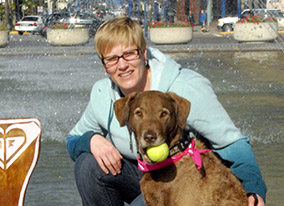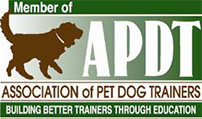You go to buy a vehicle and the seller says to you, “in all fairness, the car needs new brakes”. You are going to buy a house and “in all fairness”, the seller discloses that a big box store will be built next door. You decide to go on vacation to another country, and your travel agent tells you, “in all fairness, that hotel you want to stay at, it has had quite a few robberies.” The term in all fairness lets you know that if all the facts are disclosed, you may choose to not enter the deal, buy the car or stay at that hotel. Up front, the deal looked like one thing, but with a light on it, and you knowing all the facts, you may feel differently.
That is how I felt for a long time in my dog training. I used positive reinforcement a lot when training, my dogs loved it, did great. But now I have to go in the ring and work for “X” amount of time before rewarding. I have a dog currently that it wouldn’t matter that much to, he loves to work, he loves to do stuff, great, 2 or 3 mins. longer than usual, and no worries. But the majority of my personal dogs have cared, a lot. You could see the look in their eyes ½ through a ring performance, a little flatter, a little look of “have you forgotten something?”. I hadn’t been fair, I hadn’t told them all the facts about their ring performance.
You can do all sorts of things to make your dog think you may have or be getting reinforcement. Little motions you do like you are reaching for a toy, or act like you might have food in your mouth, but they catch on quick. So, your first time out, you look great, nice scores, dog is happy. Second time out, a little flatter, but still good and the third time, the third time, they KNOW. Now try to get a title that takes a lot of showing and for sure your dog knows. There is no way a dog that is being shown for a UDX believes that there are cookies anywhere in that ring. Again, if you have a dog that is rewarded by you, your movement, the actual work, you can get a nice performance, but if you have a dog that is not, may even be a little afraid in the ring, then the ring starts to be a downer, big time. Enter Bob Bailey and the lecture he gave saying that he had Dolphins that would work hours between reinforcements. Hours, a wild caught Dolphin. Doesn’t love him, doesn’t care if he smiles or not, is working solely for the reinforcement it can gain. As I sat there, I decided that we are asking way too little of our dogs. 5 to 10 mins in the ring didn’t seem like such a big deal compared with hours. So, how to get it? What’s the secret?
The secret is carefully training your dog what will be expected, in all fairness letting them know up front, that they may work for 10 mins or even longer between primary reinforcements. Taking the time to train your dog that your continuing to work in the ring, it means that they are moving toward reinforcement. Not pretending or trying to jolly them, but actually training them how to work for that length of time. So, I came home and started doing what I call interval training, conditioning my dogs to work for periods of time between reinforcements. You know what? They were fine with it! It was harder on me than it was for the dogs! I learned how to break down the training to pieces that make sense, let the dog win and show them what happens when an error has occurred, that it means that we start over to the path of reinforcement.
The amazing thing that happened when I started doing intervals was that I saw errors that I had only seen in the ring before. I actually gasped the first time my girl Roxy ran through her sit cue on a Directed Jumping exercise! I had worked so hard on that to have it fall apart again and again in a trial, but never in a training session, and here it was in my own building. That made me a believer, and from then on I made intervals a part of my training and my class structure in my classes here.
Now I am going to take it to an on-line class. I have struggled with it, it’s not fancy training, its good training. You will see in your usual training area, things you never saw before. You will be amazed at how much momentum you have on some exercises and how little on others. But it’s hard, you will have good behavior and not reward. This is hard on trainers, trust me. The dogs begin to learn that more than just one exercise is needed to gain reward, and you know what, they are fine with it. They get happy, they know they control the game, and at the same time, they get very accurate because they know they control how quickly the reinforcement comes.
The trainer’s that I work with that use interval training have had success and their dogs are happy to go in the ring. In all fairness though, its hard work and the trainers have to be honest with how their dogs are doing.
Expect more! Ask for more! Your dog can do it. Hope to see you in the Interval class. You can learn more about it at https://www.onehappydog.com/shop/sports-training-intensives/hardcore-intervals/



brilliant, as usual. makes a lot of sense. understanding it this way, that you are working on building up duration, stamina, helps me understand what to expect and have an idea about how to work through the errors without feeling ‘guilty’.
What are the prerequisites for the class?
Hi Gwen,
This class requires that you have some behaviors that you can chain together. They don’t have to be finished behaviors (a full drop on recall), but you need to have some parts that you can chain together. Hope that helps! If you have specific questions about where you are and what your dog can do, feel free to contact Margaret directly and she’ll be able to give you a more individual assessment.